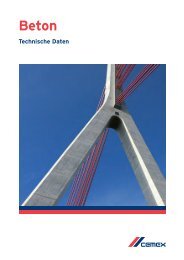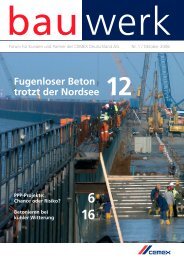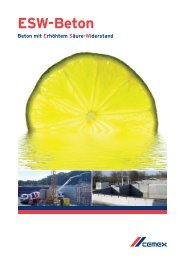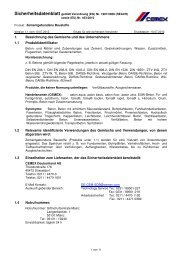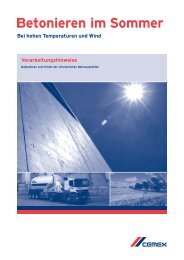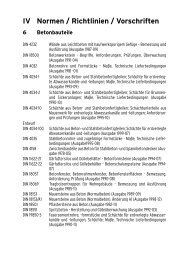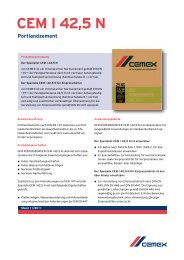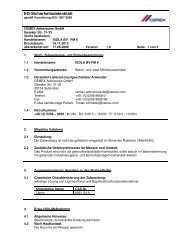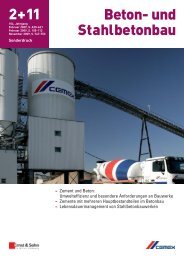building a better future - Cemex
building a better future - Cemex
building a better future - Cemex
You also want an ePaper? Increase the reach of your titles
YUMPU automatically turns print PDFs into web optimized ePapers that Google loves.
CEMEX reports zero Category 1 1<br />
environmental incidents in 2011<br />
Through rigorous efforts to standardize implementation of<br />
our environmental management processes, we have steadily<br />
decreased our annual Category 1 incident rate from 19 in<br />
2008—when we first began reporting—to zero in 2011.<br />
CEMEX is now prioritizing the reduction of Category 2 and 3<br />
incidents using root-cause analysis, training, and continued<br />
process improvements through our new, risk-based EMS. We<br />
will begin reporting on Category 2 and 3 incidents in our<br />
2012 Sustainable Development Report.<br />
managing our air emissions<br />
The cement-manufacturing process involves significant<br />
releases of atmospheric pollutants, including nitrogen oxides<br />
(NOx), sulfur compounds (SOx), and dust. Other pollutants,<br />
released in very small or negligible quantities, include dioxins,<br />
furans, volatile organic compounds, and heavy metals (including<br />
mercury). To control these major and minor emissions and<br />
stay in compliance with local and national regulations, we<br />
have steadily expanded our emissions monitoring efforts at<br />
manufacturing operations. In 2011, 80 percent of our clinker<br />
was produced with continuous monitoring of major emissions<br />
(dust, NOx and SOx), while 82 percent was produced with<br />
monitoring of both major and minor emissions.<br />
Rüdersdorf Cement Plant<br />
CATEGORY 1 INCIDENTS<br />
20<br />
15<br />
10<br />
5<br />
0<br />
08 09 10 11<br />
1 Category 1 incidents are defined as major, uncontrolled spills<br />
or releases beyond site boundaries, and in breach of internal<br />
control procedures and/or standards. These may imply major<br />
damage and/or destruction to protected habitats or species,<br />
and/or material spillage greater than 1,000 liters or 2,000 Kg.<br />
Such incidents require immediate notification and follow-up<br />
with regulators, and may involve legal action.<br />
To further improve upon these efforts, we have updated our<br />
performance targets for 2015, contributed to multi-stakeholder<br />
dialogues in our sector to address the handling of dioxins<br />
and mercury emissions, and aligned our emissions disclosures<br />
with the CSI reporting protocol. While our NOx, SOx, and dust<br />
emissions did increase in 2011, in all cases we are still below<br />
our new 2015 targets, which are more stringent than many<br />
local air-control limits and emissions regulations.<br />
Original<br />
target<br />
New<br />
target<br />
New target<br />
reduction<br />
vs. 2005<br />
baseline<br />
2009 2010 2011<br />
Emissions targets for 2015<br />
Dust specific emissions (g/ton of clinker) 106 89 101 155 120 61%<br />
NOx specific emissions (g/ton of clinker) 1.063 1.134 1.094 1.667 1.600 18%<br />
SOx specific emissions (g/ton of clinker) 410 334 335 520 520 10%<br />
During 2011, we reduced our specific NOx emissions from 1,134 to 1,094 g/ton<br />
clinker, maintained our specific SOx emissions at 335 g/ton clinker and increased<br />
our specific dust emissions from 89 to 101 g/ton clinker. The increase in specific<br />
Dust emissions is mainly due to inaccuracies related to monitoring not done on a<br />
continuous basis in some of our kilns, as we have yet to install monitoring equipment<br />
in 20 percent of our kilns.<br />
< previous 26 next>



